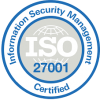The National Institute of Standards and Technology (NIST) Cybersecurity Framework (CSF) provides a structured approach for organizations to assess and enhance their cybersecurity posture. However, navigating the complexities of the NIST CSF can be challenging without the right tools and resources in place.
Understanding the NIST Cybersecurity Framework
The NIST Cybersecurity framework is based on five core functions: Identify, Protect, Detect, Respond, and Recover. These functions serve as pillars for developing and implementing effective cybersecurity strategies. Within each function, there are specific categories and subcategories that outline objectives and controls for mitigating cyber risks.
The Role of Third-Party Tools in NIST Compliance
While organizations can manually assess their adherence to NIST guidelines, leveraging the right tools can streamline the process, provide valuable insights, and shorten the time necessary to achieve compliance. These tools offer a range of features designed to align with the NIST CSF framework, facilitate risk assessments, conduct gap analyses, and generate comprehensive reports. Among the various options available, solution providers should offer products that can be tailored to meet the unique needs of your organization.
Evaluating NIST Compliance Tools: Key Features to Look For
1. Framework Alignment
Seek out solutions with features that can map your cybersecurity posture against the NIST CSF framework’s functions, categories, and subcategories. Often available straight “out of the box,” this allows organizations to identify areas of strength and weakness in their security measures.
2. Risk Assessment Tools
A solution with robust risk assessment capabilities that allows you to identify, analyze, and prioritize cybersecurity risks according to the NIST CSF framework’s risk management process. This helps organizations allocate resources effectively to mitigate the most critical risks.
3. Gap Analysis
Compliance management modules enable organizations to conduct gap analyses against NIST CSF requirements. By identifying areas where current cybersecurity controls fall short, organizations can prioritize remediation efforts to enhance their overall security posture.
4. Continuous Assessments
Pursue a solution with schedulers that allow users to schedule regular assessments for various controls outlined in the NIST CSF framework. This continuous monitoring helps organizations stay vigilant against emerging threats and adapt their security measures accordingly.
5. Reporting and Analytics
Comprehensive reporting features provide graphical representations of cybersecurity posture, risk levels, and improvement recommendations aligned with the NIST CSF. These reports facilitate informed risk-based decision-making.
6. Integration Capabilities
The solution should seamlessly integrate with other IT systems and security tools, ensuring the exchange of relevant data for NIST CSF assessments. This interoperability enhances the effectiveness of cybersecurity initiatives by leveraging existing infrastructure and resources.
7. Compliance Tracking
The best solutions allow you to track compliance efforts, collect evidence, maintain audit trails, and document corrective actions taken to address NIST CSF requirements. This comprehensive approach helps organizations demonstrate adherence to regulatory standards and industry best practices.
8. User Access Controls and Permissions
Don’t overlook the need for granular access controls which allow you to manage privileges and permissions for users involved in assessments. This ensures data integrity and confidentiality by restricting access to authorized personnel only.
9. Training and Support
Dedicated training modules, user guides, and customer support are vital to effectively utilizing a solution to its full capacity. This ongoing support ensures that users can maximize the benefits of the tools and stay updated on best practices.
10. Scalability and Flexibility
With scalable architecture and customizable features, the right solution can accommodate organizations of various sizes and complexities. This flexibility enables organizations to adapt to evolving cybersecurity needs and NIST CSF requirements over time and will grow with you.
11. Audit Trail and Version Control
The ability to maintain audit trails of NIST CSF assessment activities and changes made within the platforms supports accountability and ensures the integrity of assessment results. Version control features further enhance transparency and traceability.
Conclusion
Ensuring compliance with NIST guidelines requires a comprehensive approach that combines robust frameworks, thorough assessments, and the right set of tools. Solution providers offer a range of solutions tailored to meet the needs of organizations seeking to align with the NIST CSF and enhance their cybersecurity posture. By leveraging these tools’ extensive features and capabilities, organizations can confidently navigate the complexities of NIST compliance and mitigate cyber risks effectively.






